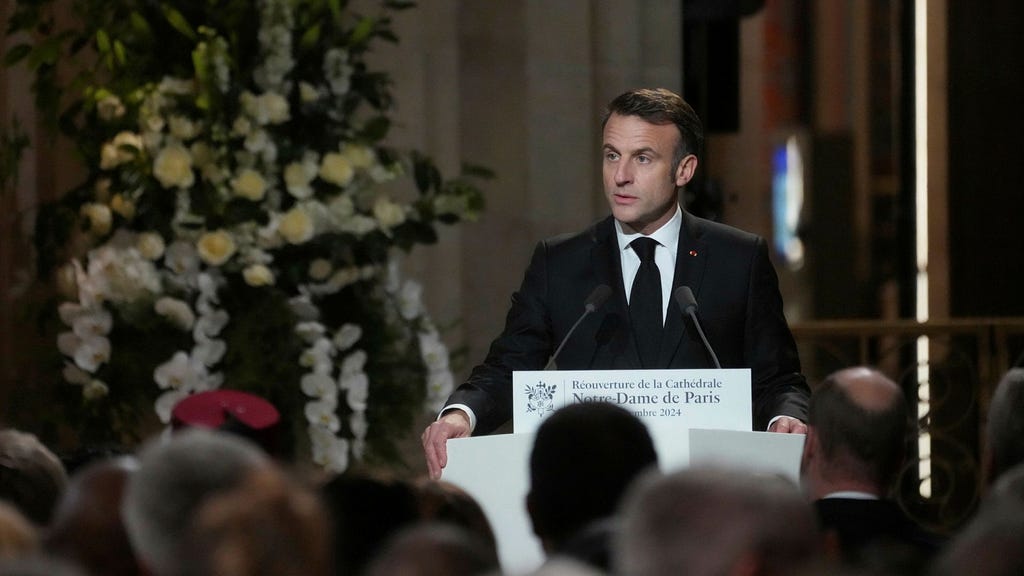The restoration of Notre-Dame de Paris Cathedral, a project spearheaded by French President Emmanuel Macron, transcends mere architectural reconstruction; it embodies the resuscitation of a potent symbol of French history, culture, and collective memory. This iconic edifice, ravaged by a devastating fire in April 2019, held a profound place in the hearts of the French people and indeed the world, representing centuries of artistic achievement, spiritual devotion, and national identity. Its near-destruction sparked a wave of global grief and an immediate commitment to its resurrection, a testament to the enduring power of shared heritage and the human capacity for renewal. President Macron’s prominent role in championing the restoration efforts has inextricably linked his legacy to the cathedral’s rebirth, ensuring his prominent position in historical accounts of this monumental undertaking.
The urgency and scale of the restoration project presented formidable challenges, demanding a delicate balance between preserving historical authenticity and employing cutting-edge techniques. Experts from various disciplines – architects, engineers, art historians, and skilled artisans – were mobilized to contribute their expertise. The meticulous task of assessing the damage, stabilizing the structure, and salvaging precious artifacts preceded the actual reconstruction. Debates ensued over the most appropriate approach to rebuilding the iconic spire, with the decision ultimately made to replicate the 19th-century design by Eugène Viollet-le-Duc. This choice reflected a desire to respect the cathedral’s familiar silhouette and maintain its historical continuity, a decision that simultaneously honored the past and acknowledged the evolving narrative of a building that has undergone numerous transformations throughout its long history.
The restoration of Notre-Dame has become a symbol of French resilience and a powerful demonstration of the nation’s commitment to preserving its cultural heritage. The outpouring of public support, both financial and emotional, from within France and around the world, underscored the cathedral’s universal significance. The tragedy of the fire transformed into an opportunity to not only rebuild the physical structure but also to reaffirm the values it represents: faith, artistry, and the enduring strength of the human spirit. The meticulous craftsmanship employed in the restoration process served as a tribute to the generations of builders and artisans who originally constructed and embellished the cathedral, underscoring the cyclical nature of history and the continuity of human endeavor.
Beyond the immediate task of physical reconstruction, the restoration of Notre-Dame carries profound symbolic weight. The cathedral’s rebirth signifies a triumph over adversity, a testament to the human capacity to overcome tragedy and emerge stronger. It represents the enduring power of collective memory and the importance of preserving tangible links to the past. The cathedral stands as a beacon of hope and resilience, embodying the spirit of a nation determined to preserve its cultural heritage for future generations. Its restoration serves as a reminder that even in the face of devastating loss, the human spirit can prevail, and beauty can be resurrected from ashes.
The restoration project also provided an opportunity to re-examine and enhance the cathedral’s role in contemporary society. The incorporation of modern technology and sustainable practices in the reconstruction process reflects a forward-looking approach to heritage preservation. The project has also sparked renewed interest in the cathedral’s history, architecture, and artistic treasures, leading to greater public engagement and a deeper appreciation of its significance. Furthermore, the restoration process itself became a spectacle, captivating the world’s attention and fostering a sense of collective ownership of this iconic monument.
The restoration of Notre-Dame de Paris will undoubtedly be recorded as a significant event in 21st-century history. It represents not merely the rebuilding of a building, but the reaffirmation of cultural identity, the demonstration of national resilience, and the embodiment of human hope. President Macron’s association with the project solidifies his place in this historical narrative, ensuring that he will be remembered as a leader who championed the restoration of a beloved landmark, a symbol of France and a testament to the enduring power of shared cultural heritage. The restored cathedral will stand as a powerful symbol of renewal and a reminder of the importance of preserving the treasures of the past for generations to come.














